
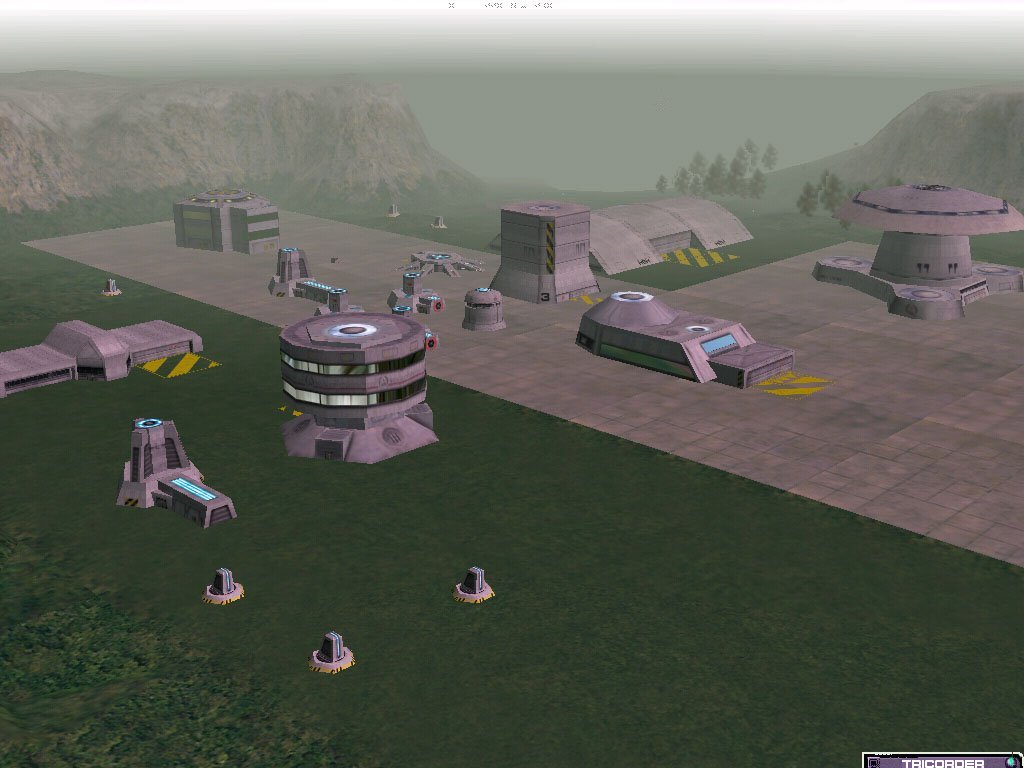 Starbase 77. The Nirophian Corridor is one of the most important assets of the Federation; it is the Suez Canal of the Federation, linking the central core of the Federation with the driftward arm with the Canopus sector. This passage 'underneath' the border region of the Klingons and Romulans, cutting the journey time by weeks. The Corridor was suggested for decades, but could not be used as the nearside end resided in a region of space called the Borderland. The Borderland - sometimes referred to as the Triangle due to its borders with Federation, Klingon and Romulan space - is a neutral region of space that acts as a buffer between the three nations. Starfleet kept a discreet distance with Starbases 6, 36 and 52. It was only after the signing of the Khitomer Accords that a nearer station, Aljetarius, could be officially re-purposed as the nearside anchor for the Nirophian Corridor. Assets freed up from the Accords could finally be used to calm the region sufficiently to have the permenent Starfleet presence formerly impossible.
Starbase 77. The Nirophian Corridor is one of the most important assets of the Federation; it is the Suez Canal of the Federation, linking the central core of the Federation with the driftward arm with the Canopus sector. This passage 'underneath' the border region of the Klingons and Romulans, cutting the journey time by weeks. The Corridor was suggested for decades, but could not be used as the nearside end resided in a region of space called the Borderland. The Borderland - sometimes referred to as the Triangle due to its borders with Federation, Klingon and Romulan space - is a neutral region of space that acts as a buffer between the three nations. Starfleet kept a discreet distance with Starbases 6, 36 and 52. It was only after the signing of the Khitomer Accords that a nearer station, Aljetarius, could be officially re-purposed as the nearside anchor for the Nirophian Corridor. Assets freed up from the Accords could finally be used to calm the region sufficiently to have the permenent Starfleet presence formerly impossible.
Along with Pluuh II and Green, the supply station at Aljetarius was the principal Federation presence near the Borderland. The station was subject to intermittant raids from Orions, Pirates and other criminal elements from this wilderness region. The Borderland/Triangle region contains Federation, Klingon, Romulan, Orion and other national, criminal and corporate interests. Starbase 52 was located in the negative Z axis from the region and is the local command hub for the region. Since Jonathan Archer and Enterprise NX-01 first explored the region in 2154, the astro-politics of the area have changed considerably. Worlds of interest to the Federation in the region include Turbulence - an independent mining colony that wishes to remain neutral - and Derigo and Zwaalan, two worlds that maintain good relations with the Federation but wish to remain independent. Newlinn III was the only world apart from Aljetarius III to actively ally itself with the Federation.
During the time of the dual Cold Wars between the Klingon and Romulan Empires against the Federation, the Borderland region was one where the independents would play off the three nations aginst each other for their own gains. The corporations and criminal elements would use the neutrality of the region to ply their trades with no consequences. This game of strategy and deception reached its peak in the 2280s and only changed after the agreement reached on Nimbus III between the three nations surrounding the Triangle. This agreement was a simple attempt to diffuse the tension in the region by a three-way agreement to cease covert and hostile actions within the Borderland and a co-operative patrol would police the region with vessels no larger than destroyer classification.
The Khitomer Accords of 2293 changed the geography of the region forever. Amongst the one hundred or so sub-clauses in the Accord, approval was given for the Federation to upgrade Aljetarius to Starbase status as 77. Part of this agreement was in return for the dismantling the space stations and monitoring stations that lined the Neutral Zone. Only Starbases 77, 6, 36 and 52 would remain in this region of space. With the lessening of tensions across not only the Klingon and Federation borders but also with the Romulans, Starfleet was able to increase the allocation of patrol vessels to the region to police the criminal activity and defend its interests better. This as only the beginning of the clean-up operation for the district as the independent colonies fought to resist the interference from outside. Whilst Starfleet complied with their wishes, their new Klingon 'friends' felt some obligation of honour to step in and stop the criminals by force. Starfleet's objections were somewhat muted.
The reason for the quiet protest was that the Nirophian Corridor had been silently approved on the Khitomer Accords and this improved the transportation and security through the region. Whilst destroyers could be resisted, larger vessels in transit through the region could use the opportunity to subdue the opposition. The Borderland now had Excelsior and Constellation class vessels transiting through, along with capital shiops of tacfleet, but all in carefully agreed numbers and tonnage. Advanced notice was also given to the Romulan and Klingon governments to prevent any 'misunderstandings'.
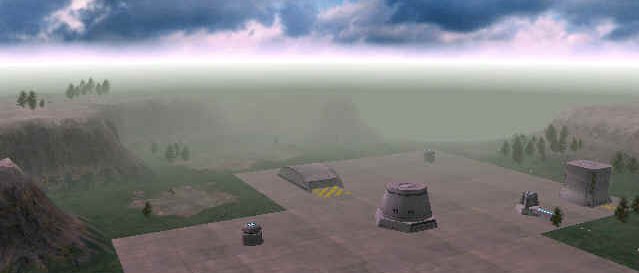 Starbase 77, former Supply Station Aljetarius
First established: 2184
Federation supply station 'Aljetarius'
Located: Near Borderland region on Federation side.
2184: Covert Monitoring Station Aljeterius founded in Sector 16 to
monitor the Romulan Neutral Zone
2279: Aljeterius upgraded to Supply Station to "explain" all the "exploratory" starships in the sector, which are actually keeping an eye on "underbelly" of the Romulan and Klingon
Empires during a Cold War heating up.
2291: Aljeterius authorised for upgrading to starbase status to
support the Tabula Rasa campaign, unofficial designation of Starbase 77. Supplies are delivered by U.S.S. Explorer but the subsequent releasing of the Metar and the ultimate disappearance of the Tabula Rasa systems delays the upgrading.
2293: - Khitomer Accords signed; in it are provisions for aid convoys Starbase 77 officially authorised in Khitomer Accords, but resources dedicated to upgrading base are diverted
to Klingon Relief Operations. Upgrading is slow, and the base is still referred to as Aljeterius.
2294: 33-y.o. Lt. Cmdr Amanda Bryam assigned to Starbase 77 after a 6-month personal leave from being a tutor at the Academy; she becomes the XO of Commander Skellash of Tellar,
a 10-year veteran destroyer captain.
2300: Amanda Bryam promoted to Commander and assigned elsewhere
2301: Aljeterius is officially renamed and commissioned as Starbase 77
after minimal administration facilities have been created. However, everyone still calls it Aljeterius and the
"Starbase 77" title is regarded as a ridiculous joke by Starfleet rank and file. This is not due to Skallash’s bad
leadership, just bureaucratic red tape, but Skallash hates the reputation his command has gained
2308: -U.S.S. Fearless assigned to Sector 16 to patrol newly established
"Nirophian Corridor".
-Commander Skallash has managed to steadily if slowly upgrade
Starbase 77 so that it is a proper
operational starbase now, but the stigma still remains.
2311: Commodore Maxwell Buckingham is brought in to officially
transfer the 2nd Fleet's command to the fully
equipped and operational Starbase 77, and to restore the base's
heavily tarnished image
2312: Forward-deployed element of the Second Fleet arrives with U.S.S. Blake, Belknap III (Excel variant) class as flagship.
Starbase 77, former Supply Station Aljetarius
First established: 2184
Federation supply station 'Aljetarius'
Located: Near Borderland region on Federation side.
2184: Covert Monitoring Station Aljeterius founded in Sector 16 to
monitor the Romulan Neutral Zone
2279: Aljeterius upgraded to Supply Station to "explain" all the "exploratory" starships in the sector, which are actually keeping an eye on "underbelly" of the Romulan and Klingon
Empires during a Cold War heating up.
2291: Aljeterius authorised for upgrading to starbase status to
support the Tabula Rasa campaign, unofficial designation of Starbase 77. Supplies are delivered by U.S.S. Explorer but the subsequent releasing of the Metar and the ultimate disappearance of the Tabula Rasa systems delays the upgrading.
2293: - Khitomer Accords signed; in it are provisions for aid convoys Starbase 77 officially authorised in Khitomer Accords, but resources dedicated to upgrading base are diverted
to Klingon Relief Operations. Upgrading is slow, and the base is still referred to as Aljeterius.
2294: 33-y.o. Lt. Cmdr Amanda Bryam assigned to Starbase 77 after a 6-month personal leave from being a tutor at the Academy; she becomes the XO of Commander Skellash of Tellar,
a 10-year veteran destroyer captain.
2300: Amanda Bryam promoted to Commander and assigned elsewhere
2301: Aljeterius is officially renamed and commissioned as Starbase 77
after minimal administration facilities have been created. However, everyone still calls it Aljeterius and the
"Starbase 77" title is regarded as a ridiculous joke by Starfleet rank and file. This is not due to Skallash’s bad
leadership, just bureaucratic red tape, but Skallash hates the reputation his command has gained
2308: -U.S.S. Fearless assigned to Sector 16 to patrol newly established
"Nirophian Corridor".
-Commander Skallash has managed to steadily if slowly upgrade
Starbase 77 so that it is a proper
operational starbase now, but the stigma still remains.
2311: Commodore Maxwell Buckingham is brought in to officially
transfer the 2nd Fleet's command to the fully
equipped and operational Starbase 77, and to restore the base's
heavily tarnished image
2312: Forward-deployed element of the Second Fleet arrives with U.S.S. Blake, Belknap III (Excel variant) class as flagship.
Supply station 'Aljetarius' was constructed in the early years of the Federation. Authorised after the end of the war with the Romulans, the base was selected on a planet on the spinward side of the Romulan Star Empire in order to both facilitate the exploration of the far side of the Romulans, but to also keep a convert eye on the Romulans, to see that they complied with the terms of the treaty as set down over subspace.
Supply station 'Aljetarius' was authorised to be upgraded as Starbase 77 as of Stardate 9153. The starbase was located in the Aljetarius system, on the very fringe of Federation space. This region had been a supply area for the missions during the Tabula Rasa missions of 2292. The future Starbase 77 was the main supply base, set up by the ill-fated U.S.S. Explorer before she continued into the Tabula Rasa systems. The base was used as a planning area during the exploratory phase of the Tabula Rasa situation, it was also used as the fall-back base when the situation was resolved. Starfleet planned to upgrade the base to Starbase standards, but when the Tabula Rasa systems vanished again, there was no need.
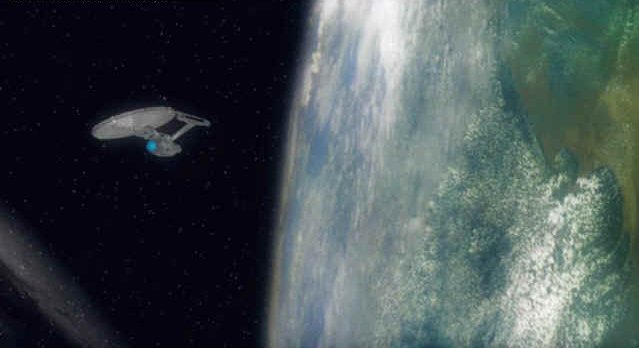 Starbase 77 was officially approved under the fine print on the Khitomer Accords. During the negotiations on Stardate 9529, President Ra-Ghoratreii and his team had pre-planned terms they knew they wanted to include and Starbase 77 was one of them. Obsolete and inferior locations were sacrificed by the politicians in return for the favourable position of Starbase 77 at the nearside end of the Nirophian Corridor. With the ending of hostilities with the Klingons, and the beginnings of possibly improved relations, the Corridor increased in importance.
Starbase 77 was officially approved under the fine print on the Khitomer Accords. During the negotiations on Stardate 9529, President Ra-Ghoratreii and his team had pre-planned terms they knew they wanted to include and Starbase 77 was one of them. Obsolete and inferior locations were sacrificed by the politicians in return for the favourable position of Starbase 77 at the nearside end of the Nirophian Corridor. With the ending of hostilities with the Klingons, and the beginnings of possibly improved relations, the Corridor increased in importance.
Starfleet Commander-in-Chief, Admiral William Smillie, was pleased that the Second Fleet would be able to secure the Corridor for regular trade ships and warship passage to and from Starbase 36 and onwards to Canopus. Starbase 77 had been held back for political reasons: the Klingons had made it plain they did not like the presence of a Corridor that the Federation could use to supply arms to its Canopus bases. They saw it as a means of encapsulating the Romulan end of the Klingon Empire. This was why no permanent warship allocation was made to either Aljetarius or Starbase 36 at the other end of the Corridor.
This was not a tactical advantage, merely a reshuffling of administrative resources to cope with the redrawing of the borders. With the abolition of the Neutral Zone, privateering, smuggling and other illegal activities that have used the Neutral Zone as protection could at last be addressed and dealt with. Most of the backwater worlds welcomed the Federation back, overjoyed that their worlds could now be supplied by the Federation with top-class equipment. Others, however, were not pleased that years of lucrative trading in information, spies and contraband were about to be ended.
Starbase 77 came on line on Stardate 11201.5 (Earth calender year 2301) and immediately took over all of the colonial and supply functions of Starbase 15, which was reduced to merely a support starbase. Upon Starbase 77 coming on line, all of the Omega class space stations and Starbase Arthur were officially decommissioned, although in truth they had been either partially or completely demolished during the previous 6 years. With Starbase 77 now fully functional, supporting Starbases 36, 15 and Starbase 6, this area of space has now finally be opened up for exploration and discovery.
What Commodore Buckingham found was that reality sometimes does not gel with what we are told. The description above is how Starbase 77 is officially described. What is written below more closely follows the truth, whatever truth truly is.
Unlike Starbase 15, Starbase 77 is a planetary based structure. The primary function of the station is administration. In the time since Starbase 77 was authorised progress has been slow. The Federation offered "top class equipment" as mentioned above, and stated that "all the resources in the area would be at the disposal of Starbase 77 in order to implement its construction, hasten its completion and assist in its operation". The truth is that so much of the aforementioned resources are committed to the Klingon humanitarian programme and dealing with the smugglers that in fact Starbase 77 is lucky to see a starship every few months. And when a starship does turn up, it is usually a Starfleet Auxiliary with supplies, or perhaps a frigate. Occasionally a destroyer or even an elderly cruiser running taxi service for an admiral has been known to turn up. This is how it was until the latest starbase commander arrived.
Commodore Maxwell Buckingham has been placed in command after the lack of progress for seven years. The Second Fleet Forward-Deployed Squadron 2.10 for the Nirophian Corridor is officially controlled from Starbase 77, although the base has no repair or maintenance facilities for visiting starships. The latest ships to be deployed to the Corridor are Apollo class starships Galatea, Artemis, Cerberus, Leander, Hermione and Charybdis. This class of starship is adept at dealing with the piracy and smuggling issues, policing the freight runs through the region. With the tonnage limitation in the Triangle, the Apollo class is the tactical back-up for the Okinawa class frigates. The Okinawa assigned are of the FFG variant, including Sheridan, Chamberlain, Mannstein and Buford. These Okinawa class are from the 2279 batch and are amongst the oldest of the class still in service; ambitious, talented young Lieutenant Commanders aspire for the captaincy of these vessels: to get an early taste of command and responsibility. Buckingham is looking to mix up these with Advanced Commando Frigate (FFC+) Okinawa variants Higgens and Cardott, to tackle the Orion issues.
With a commodore, an ambitious one at that, now in charge of the station, one would think that the station would get all of the supplies, personnel and pretty much anything needed in order to get the station properly operational. Again, truth is, this is a station that is on the very fringe of the Federation. Nothing usually comes out this far, and if it is, it is has usually been supporting the post-Praxis clean up, or has been enhancing the quality of the Federation colonies that have been requesting upgrades for decades.
Commodore Buckingham started his tour with an inventory of all of the buildings at the station, their use and their current condition. From there he would be able to contact Starbase 12 for logistical support in bringing the starbase up to top condition.
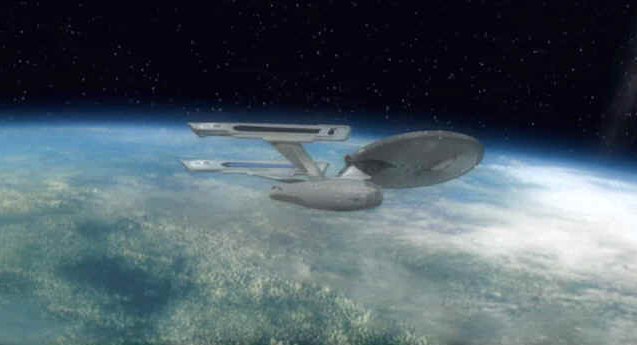 Starbase 77 buildings:
Starbase 77 buildings:
1 – Hub
2 – Accommodation block
3 – Medical block
4 – Science block
5 – Engineering block
6 – Storage facility
7 – Security facility
8 – Resource processor
9 – Vehicle yard
10 – Transporter Pad
11 – Shield generator
12 – Hydroponics
13 – Storage facility
14 – Accommodation block 2
15 – Communications block
36 – mothballed building being brought back to service
37 – mothballed building being brought back to service
41 – mothballed building being brought back to service
Starbase 77 has now had the central Hub complex of the base upgraded to level 3 standard. The sickbay and science block facilities are now undergoing an upgrade. Commodore Maxwell Buckingham has been promised new Starfleet personnel to enhance the base and it is only a matter of time before starships of the Second Fleet are redirected to Starbase 77.
Current Starbase 77 staff in 2312:
Commanding Officer: Commodore Maxwell Buckingham
Executive officer: Commander Helen Buckingham (nee Hawkins)
Chief Engineer: Lt Cmdr Rajesh Singh (Udhagamandalam or Ootacamund, abbreviated as Udhagai or Ooty). From a family of railway engineers.
Chief Medical Officer: Lt Iluna (Deltan)
Science Officer: Lt T’seema (Vulcan)
Communications officer: Lt (j.g.) Benjamin Goodluck (Cook Islands)
Starbase numbers increase exponentially, to match the growth rate of the U.F.P. and fleet size. Below is a table of Earth year and number of operational starbases:
| Earth Year | Starbase Quantity | Number Increase |
| 2190 | 12 | 0 |
| 2265 | 17 | 5 |
| 2270 | 23 | 6 |
| 2280 | 31 | 8 |
| 2290 | 50 | 19 |
| 2301 | 77 | 27 |
| 2315 | 125 | 48 |
| 2330 | 250 | 125 |
| 2364 | 500 | 250 |
The above figures take into account the 'rules' used in TOS that said there were 17 starbases, and in TNG there were 'a little over 500'. A few minor discrepencies appeared in both series [which I shall gloss over, along with 5 starbases built between 2190 and 2265]. Other starbases and space stations exist which supplement these numbers.
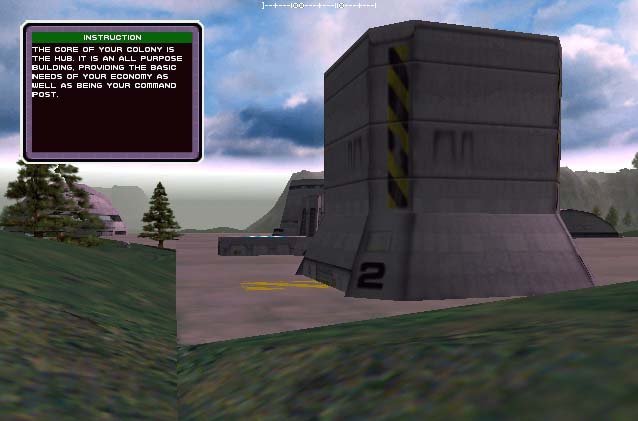 Update stardate 11429.5. Starbase 77 now undergoing upgrading in light of the rise to power of General Kaarg. Hub facilities are to be upgraded, and buildings 36, 37 and 41 and 42 - mothballed since the end of the Tabula Rasa campaign - have been assigned to be reactivated and upgraded. U.S.S. Sheffield [NCC 1976, Miranda class] has recently finished her assignment and has almost completely swapped out her crew. Whilst the Sheffield is in orbit, she is assigned to assist in the upgrading of Starbase 77. The science block is being enlarged, as are the construction facilities. Work has begun on an orbital drydock facility to repair visiting starships with, with the coming online of an antimatter refueling facility, the numbers of visiting starships has increased. The science block is a fairly impressive structure already, with a large behavioural science and intelligence unit supplementing the usual numbers.
Update stardate 11429.5. Starbase 77 now undergoing upgrading in light of the rise to power of General Kaarg. Hub facilities are to be upgraded, and buildings 36, 37 and 41 and 42 - mothballed since the end of the Tabula Rasa campaign - have been assigned to be reactivated and upgraded. U.S.S. Sheffield [NCC 1976, Miranda class] has recently finished her assignment and has almost completely swapped out her crew. Whilst the Sheffield is in orbit, she is assigned to assist in the upgrading of Starbase 77. The science block is being enlarged, as are the construction facilities. Work has begun on an orbital drydock facility to repair visiting starships with, with the coming online of an antimatter refueling facility, the numbers of visiting starships has increased. The science block is a fairly impressive structure already, with a large behavioural science and intelligence unit supplementing the usual numbers.
With logistics being one of Starfleet's highest priorities, and the highest of this base, additional buildings supporting the logistical side of Federation colonial activities have recently come online. There is also a very strong Starfleet Auxiliary presence at the base. S.S. Green Rover [NAR 1268] and S.S. Red Rover [NAR 1277] have been shuttling between the antimatter generation facilities nearby and the antimatter storage facilities at starbase 77. Mughi class auxiliary S.S. Lamia has been assigned to the base to support the forward-deployed elements of the Second Fleet.
Current starships in orbit of the base: U.S.S. Dreadnought [NCC 7745, Constellation class] has been in orbit undergoing debugging, following her pressing into service to cover for the otherwise-engaged U.S.S. Montrose. U.S.S. Albion is also at Starbase 77, having offloaded Commodore Matthews at the base, for transfer to U.S.S. Agile for transport to Starbase 6 for de-briefing. Akula class destroyers Wolfhound and Hatakaze are being serviced ready for deployment down the Corridor to Starbase 36. Antares class AWACS starship U.S.S. Nimrod has been deployed to the station to monitor the fleet re-positioning by the Klingons, following the appointment of Chancellor Kaarg. Okinawa class frigates Sheppey and Egret recently arrived at the station, with the latter requiring repairs after an encounter with a Jindarian caravan. U.S.S. Bikini deployed down the Corridor destined for Starbase 36, on a routine patrol.
Starbase 77 works in concert with the earlier established Starbase 52, Starbase 36 and Starbase 6. Starbase 6, established even before James T. Kirk's missions on the Enterprise, is the command and control centre for the driftward region of the Federation. Starbase 15 ‘Pharos’ is the staging post for deep space missions beyond Federation space and also the concentrating point for incoming immigrants and visitors to the region.
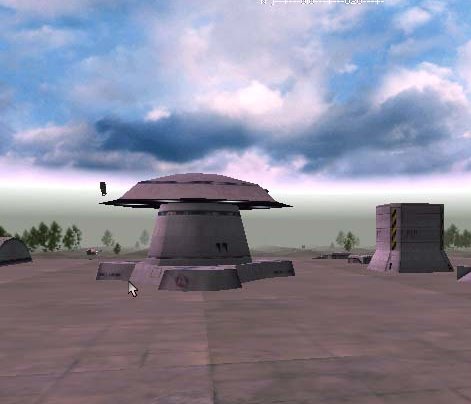 The Ninth Fleet is currently based at Starbase 6, allowing for a presence in the region. Assets from the Ninth Fleet routinely patrol down the Corridor to Starbase 77 and return. Squadrons deployed from Starbase 12 and the Second Fleet can be assigned to starbase 77 for specific missions, under the auspices of Commodore Buckingham.
The Ninth Fleet is currently based at Starbase 6, allowing for a presence in the region. Assets from the Ninth Fleet routinely patrol down the Corridor to Starbase 77 and return. Squadrons deployed from Starbase 12 and the Second Fleet can be assigned to starbase 77 for specific missions, under the auspices of Commodore Buckingham.
The Klingon Empire was vocal about taking the Nirophian Corridor back during the late 2270s and into the 2280s. Under Chancellor Azetbur the rhetoric was muted by the need for Federation Aid and the terms of the Khitomer Accords. Chancellor Kaarg, by contrast, has been much more vocal about re-integrating former Klingon territories back into the Empire. Federation politicians have put this down to bluster designed to appeal to the hard-liners in the High Council; Starfleet is remaining cautious about Klingon political restructuring and policy changes.
Currently the Phobos class frigates are being replaced by modern Apollo class. Starfleet is showcasing their modernised fleet to deter any potential Klingon aggression, without the need for capital ships. Apollo class destroyers of the latest upgrade standards are being forward deployed to displace the older Akula variants and Saladin class. The official line given is that Starfleet is modernising for exploration, diplomacy, scientific discovery and anti-piracy patrols.
Second Fleet
The Second Fleet is based at Starbase 12 under Fleet Admiral Charles Lawrence Buckingham. Starbase 12 is located on the New Holland colony in the Maelstrom system. The starbase has been operational since the late 22nd Century and has been expanded and modernised a dozen times. The starbase itself consists of an orbital mushroom spacedock facility and extensive control and communications facilities. The nearby Soho station has a dozen space docks, able to refurbish all starships in the Starfleet. The nearby Maelstrom phenomena is a shipping hazard and off-limits to starships due to unpredictable subspace effects.
The Second Fleet covers the Beta Quadrant, including the borders with Klingon and Romulan space. Fleet Admiral Buckingham is one of the two flag officers currently short-listed for the role of Commander-in-chief, Starfleet when Irina Khmelnova steps down. Excelsior class starships are used as flagships for the Second fleet, amongst those allocated are: Hood, Discovery, Endurance, Implacable, Renown and Fearless. Starbase 12 lies near the Maelstrom phenomenon, orbiting over the New Holland colony. Forward bases for the Second Fleet are SB 12, 16, 20, 22, 29, 42, 56, 73, 105 and now 77.
Author's Notes
With the recent overhauling of the Starfleet page, it soon became apparent that the other starbases nearby would have been around for just a short period before 77 came online. Starbase 77 therefore had to reflect the rushed-together supply base feel, from the established back story as the main supply base from the Tabula Rasa campaign. The strong influence of the Starfleet Auxiliary service is a tip-of-the-hat to the Royal Fleet Auxiliary that supports the Royal Navy on a day-to-day tireless fashion. With logistics being the most important aspect to Starfleet's onward push into the unknown, it makes sense that one of their most forward positioned bases would be dedicated to the role.
The Nirophian Corridor story is one fleshed out by my good friend Andrew Brown and I, bringing a ‘Suez Canal’ feel to the region. The ‘far side colony’ of Federation space – seen on the Beta Quadrant side of Klingon and Romulan space, was always a region that looked vulnerable. The Organian Conflict back-story of Andy’s developed this as the reason for Starbase 52 at the far end of the Corridor and it made sense that the near end would have a base to support the Corridor.
The Second Fleet is based upon many aspects of the Royal Navy and United States Navy - specifically the forward positioning bases at Gibraltar and Yokosuka, Japan; Yokosuka is where the Sixth Fleet forward-deployment base is, where the USS Kitty Hawk (CV-63) was based, succeeded by Nimitz-class USS George Washington (CVN-73) Carrier Battle Group and now the USS Ronald Reagan (CVN-76) Carrier Battle Group.
Task Group 2.10 was like the Sixth Fleet forward-deployed force at Yokosuka with Okinawa and Apollo class frigates with Akula class destroyers providing the majority of the composition. An Excel class strike cruiser made sense to control Task Group 2.10 in a practical sense, limited by the Khitomer Accords smallprint rather like the Black Sea situation in the real world.
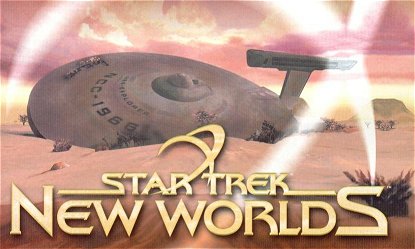
"The above artwork is © Interplay Productions. All rights reserved"










 Starbase 77 was officially approved under the fine print on the Khitomer Accords. During the negotiations on Stardate 9529, President Ra-Ghoratreii and his team had pre-planned terms they knew they wanted to include and Starbase 77 was one of them. Obsolete and inferior locations were sacrificed by the politicians in return for the favourable position of Starbase 77 at the nearside end of the Nirophian Corridor. With the ending of hostilities with the Klingons, and the beginnings of possibly improved relations, the Corridor increased in importance.
Starbase 77 was officially approved under the fine print on the Khitomer Accords. During the negotiations on Stardate 9529, President Ra-Ghoratreii and his team had pre-planned terms they knew they wanted to include and Starbase 77 was one of them. Obsolete and inferior locations were sacrificed by the politicians in return for the favourable position of Starbase 77 at the nearside end of the Nirophian Corridor. With the ending of hostilities with the Klingons, and the beginnings of possibly improved relations, the Corridor increased in importance. Starbase 77 buildings:
Starbase 77 buildings: Update stardate 11429.5. Starbase 77 now undergoing upgrading in light of the rise to power of General Kaarg. Hub facilities are to be upgraded, and buildings 36, 37 and 41 and 42 - mothballed since the end of the Tabula Rasa campaign - have been assigned to be reactivated and upgraded. U.S.S. Sheffield [NCC 1976, Miranda class] has recently finished her assignment and has almost completely swapped out her crew. Whilst the Sheffield is in orbit, she is assigned to assist in the upgrading of Starbase 77. The science block is being enlarged, as are the construction facilities. Work has begun on an orbital drydock facility to repair visiting starships with, with the coming online of an antimatter refueling facility, the numbers of visiting starships has increased. The science block is a fairly impressive structure already, with a large behavioural science and intelligence unit supplementing the usual numbers.
Update stardate 11429.5. Starbase 77 now undergoing upgrading in light of the rise to power of General Kaarg. Hub facilities are to be upgraded, and buildings 36, 37 and 41 and 42 - mothballed since the end of the Tabula Rasa campaign - have been assigned to be reactivated and upgraded. U.S.S. Sheffield [NCC 1976, Miranda class] has recently finished her assignment and has almost completely swapped out her crew. Whilst the Sheffield is in orbit, she is assigned to assist in the upgrading of Starbase 77. The science block is being enlarged, as are the construction facilities. Work has begun on an orbital drydock facility to repair visiting starships with, with the coming online of an antimatter refueling facility, the numbers of visiting starships has increased. The science block is a fairly impressive structure already, with a large behavioural science and intelligence unit supplementing the usual numbers.  The Ninth Fleet is currently based at Starbase 6, allowing for a presence in the region. Assets from the Ninth Fleet routinely patrol down the Corridor to Starbase 77 and return. Squadrons deployed from Starbase 12 and the Second Fleet can be assigned to starbase 77 for specific missions, under the auspices of Commodore Buckingham.
The Ninth Fleet is currently based at Starbase 6, allowing for a presence in the region. Assets from the Ninth Fleet routinely patrol down the Corridor to Starbase 77 and return. Squadrons deployed from Starbase 12 and the Second Fleet can be assigned to starbase 77 for specific missions, under the auspices of Commodore Buckingham.





